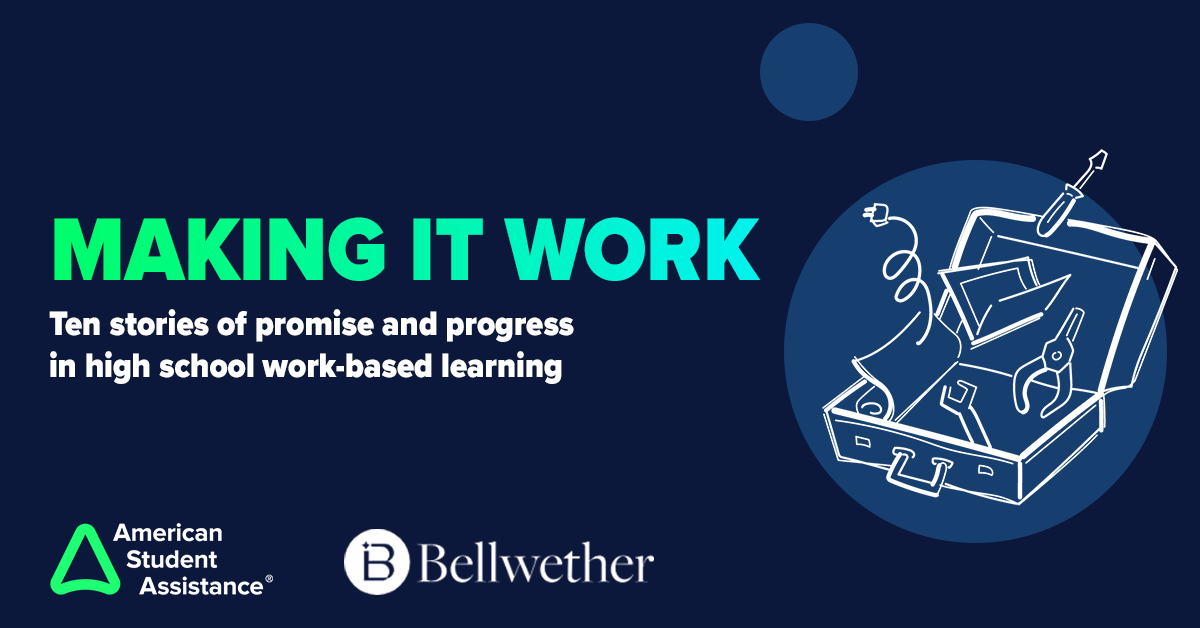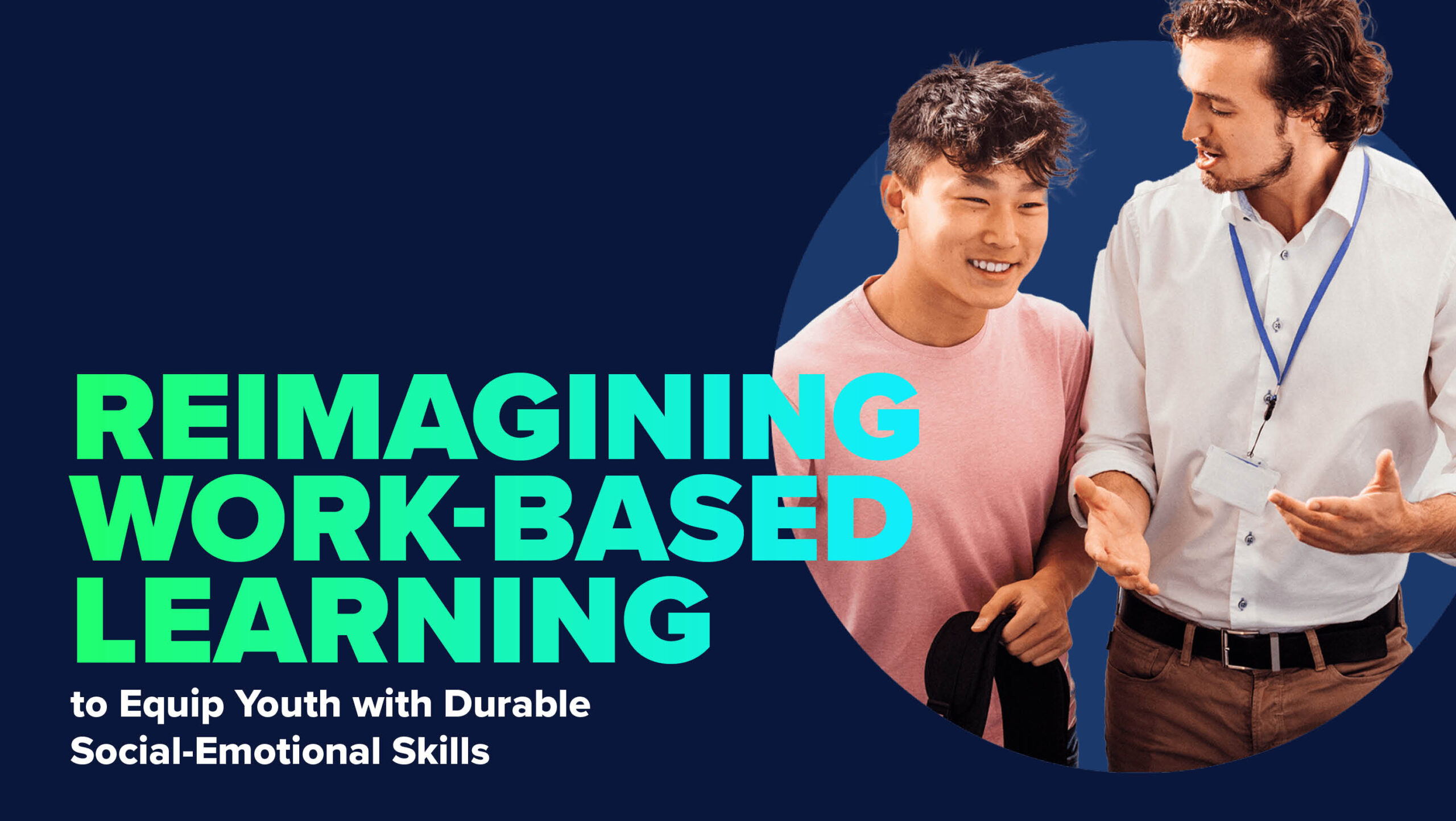Social emotional learning (SEL), as defined by the Collaborative for Academic, Social and Emotional Learning, encompasses the process through which individuals acquire and apply knowledge, skills, and attitudes to develop healthy identities, manage emotions, and achieve personal and collective goals. Similarly, America Succeeds defines durable skills as the competencies used to share knowledge, including critical thinking and collaboration, as well as character traits like fortitude and leadership.
How can employers help our nation’s youth develop these key skills and set them up for career success?
Work-based learning (WBL) experiences, including internships and apprenticeships, are a good place to start. Thirty-eight percent of employers currently offer high school internships and 30 percent are planning to start a program.
If you are an employer providing or embarking on a WBL program, we encourage you to intentionally integrate durable, social emotional skills into your experiences. To help you get started, here are some actionable steps you can take:
· Plan workshops and activities around durable skills. The Center for Advanced Professional Studies (CAPS) Network provides a variety of resources, including the CAPS Professional Skills Profile and the Durable Skills Wheel, that can help employers develop meaningful workshops. They also partner with organizations to create two-week boot camps that immerse students in durable skill development. Providing credentials, like those offered by Conover Workplace Readiness or the one in development from America Succeeds and CompTIA, is another option that will build consistency and credibility into your program.
· Emphasize priorities with managing staff. Explain to your staff members who will be working directly with students that developing their durable skills is an important part of your organization’s WBL experience. Brainstorm ways that they can incorporate skills into daily tasks, like assigning team projects so students can enhance their collaboration skills.
· Explore intermediaries. Since many schools don’t have connections with employers in their communities, it may be helpful to work through intermediaries.
The Rodel Charitable Foundation of Delaware, for example, works to “strengthen Delaware’s public education system and workforce by connecting partners to advance and implement sustainable solutions.” In addition, Rodel President Paul Herdman suggests that employers may find it helpful to partner with nonprofits like Junior Achievement to assist with internships as well as support relationship-building with high school students.
· Provide equitable access. Advocate for federal and state policies, as well as business practices, that provide equitable opportunities so that all youth can access skill-building experiences and career pathways. This includes fair compensation as well as welcoming a diverse range of students to your program.
· Collaborate across stakeholders. Preparing students for career success is a team effort. Reach out to local educators to see what durable skills students are learning in the classroom and build on those efforts. And take the time to introduce students to employees around your organization so they can learn how different departments work together and build their professional networks.
· Balance authenticity and adaptability. While one of the main goals of WBL programs is to introduce students to professional workplaces, it is also important to create an environment where students feel welcomed and accepted for their authentic selves. Students need to feel safe before they can truly engage in learning experiences. The Chica Project, an organization that supports young female-identifying women of color, recommends several best practices for creating safe spaces including stressing long-term engagement so students know employers are invested in their continued success and near peer mentors where interns are matched with younger employees closer to their age and experience levels.
· Dedicate enough time and resources. Set-up and planning an internship or apprenticeship program takes time and requires input from across your organization. For example, since your program may include minors, it’s important to consult your Legal team for advice on state laws and regulations around safety, liability, child labor, or workers’ compensation for youth.
· Think through the hiring process. To clarify expectations for both the student and your employees working with youth, you’ll want to create a clear job description (see sample). You’ll also need to advertise/promote the opportunity to a diverse group of students. If you’ve already established relationships with schools or youth groups, that’s a great place to start. If not, consider working with intermediaries such as workforce development boards like Boston Private Industry Council, to make connections.
· Consider your financial commitment. Paid WBL opportunities have several advantages. First, they are more equitable because they don’t force low-income students to choose between a paying job and a career exploration experience. Research also shows that they set students up for long term success as students who participate in paid opportunities have better future earnings than those who participated in unpaid opportunities.
If paying internship opportunities aren’t feasible for your organization, consider researching grants, wage subsidies, or tax incentives from your city or state. Delaware, Indiana, New Jersey, and Vermont are some states that provide funding assistance.
And if you do decide to compensate students, make sure you involve your Finance team to set up the payment process or coordinate with an intermediary to handle the payments for you. They may also be of assistance locating state and federal tax exemption forms for student workers who earn under a certain amount and are therefore not required to file a tax return.
For more practical and tangible recommendations to enhance or create work-based learning experiences in your organization, read “Reimagining Work-Based Learning to Equip Youth with Durable Social-Emotional Skills.”




